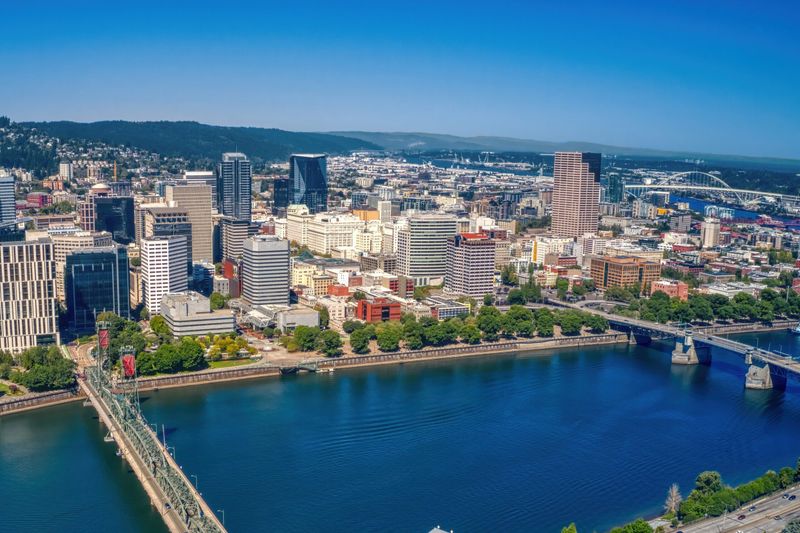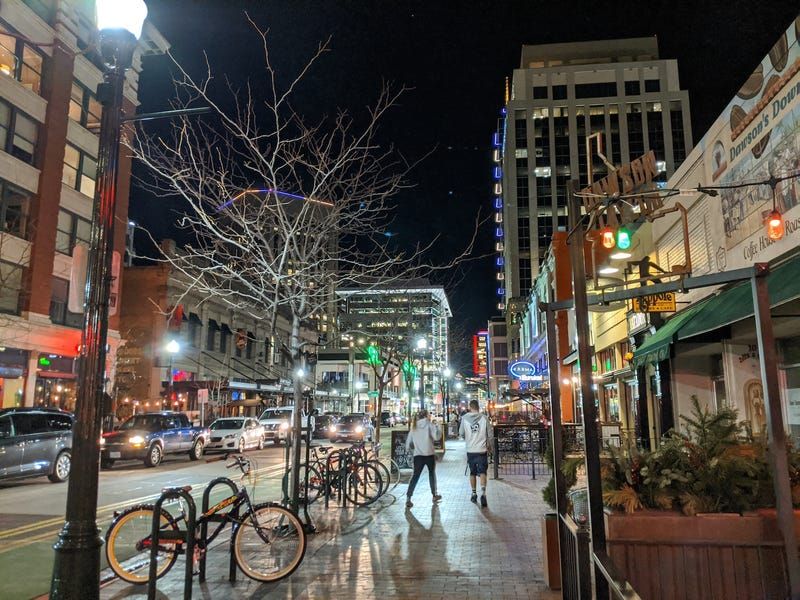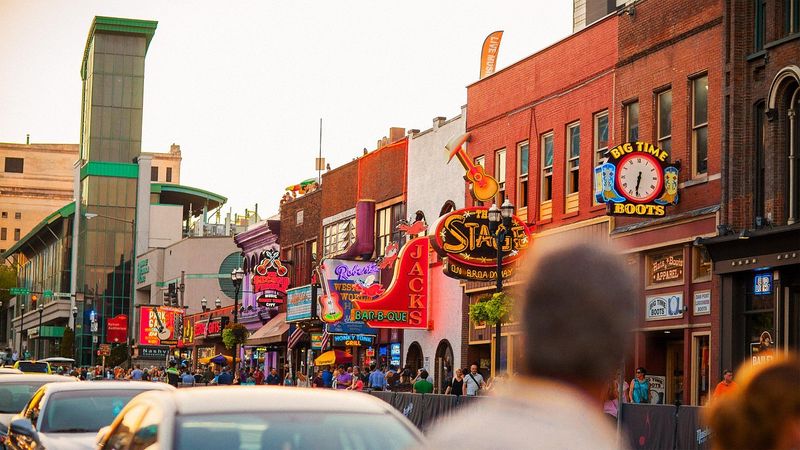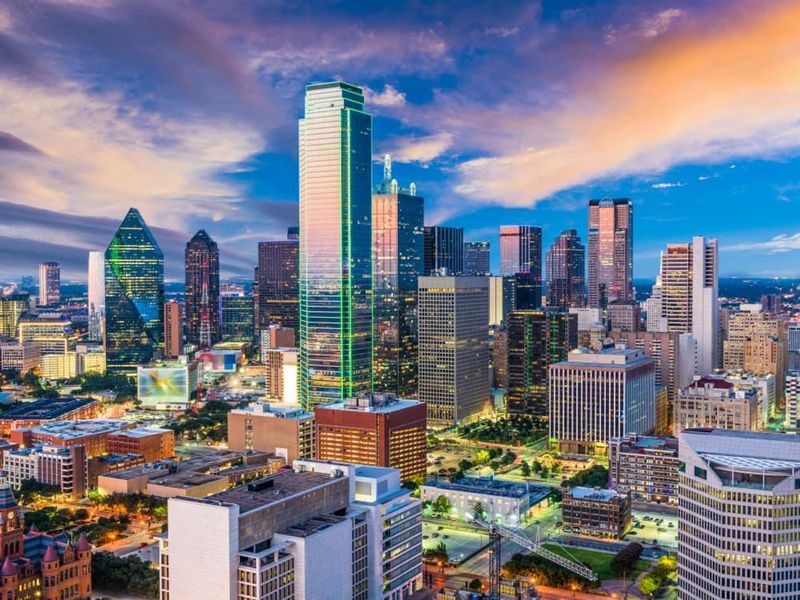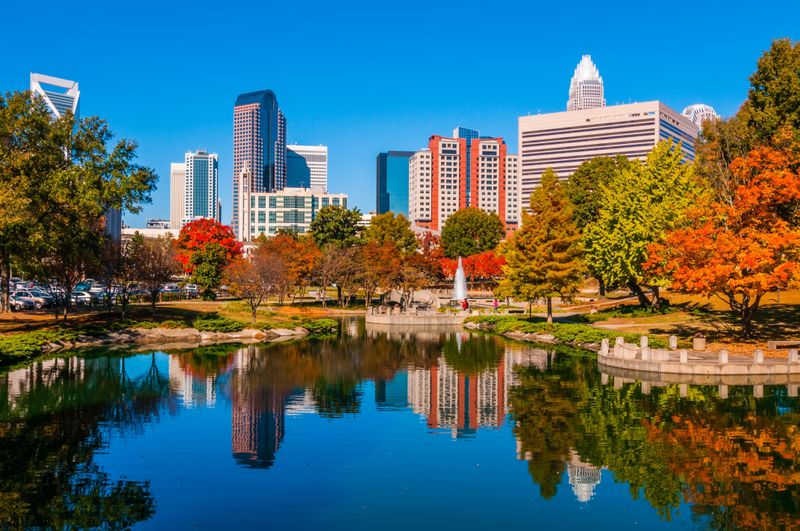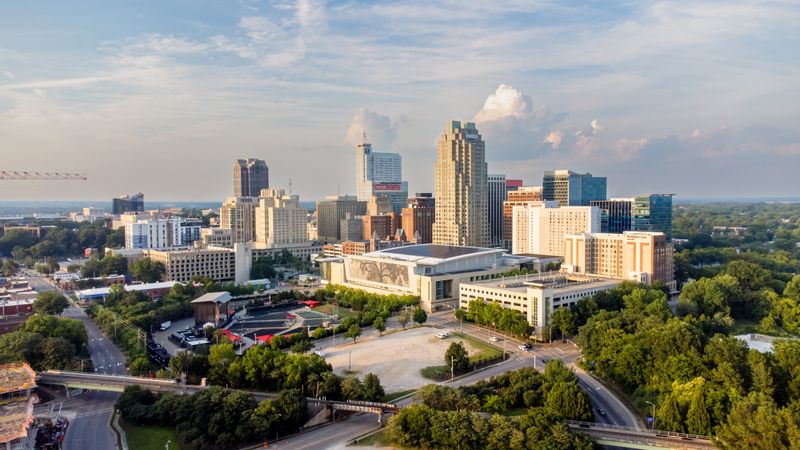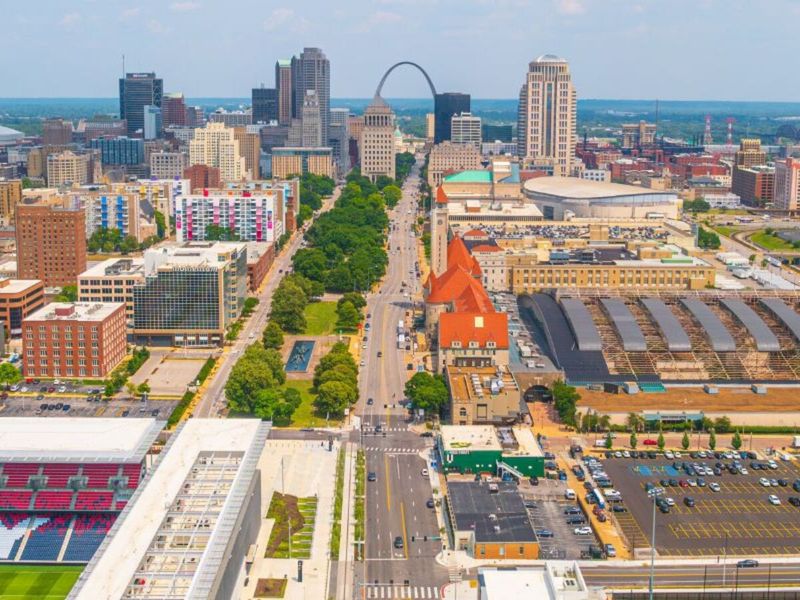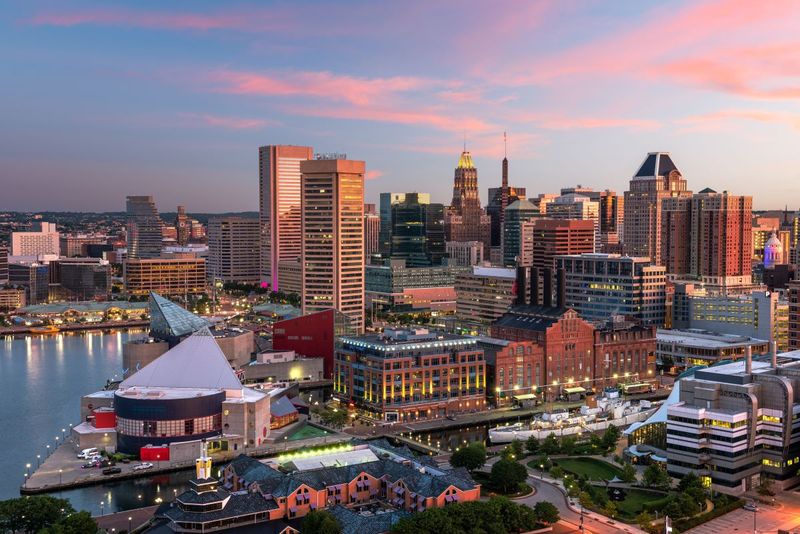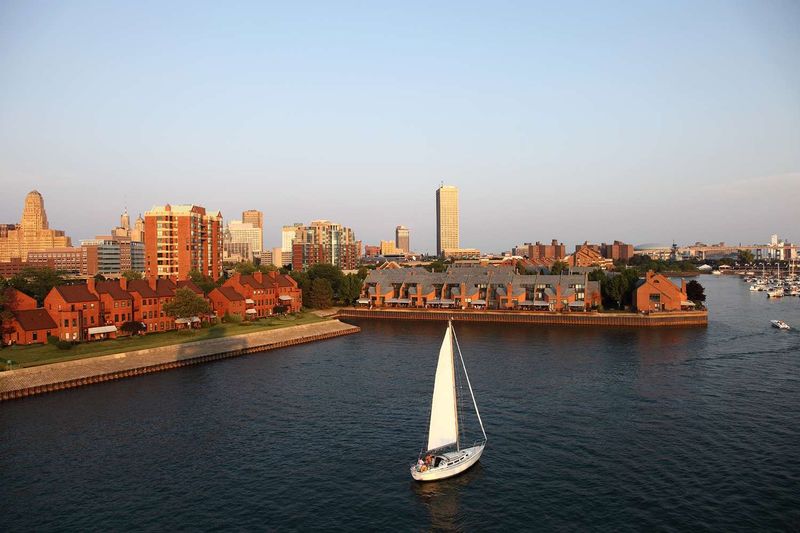Cities are living organisms, constantly evolving with new people, new money, and new priorities. But some places have transformed so rapidly that longtime locals barely recognize their streets, skylines, or culture. From tech booms to redevelopment waves, these changes bring both opportunity and uneasy nostalgia. Ready to see which cities residents say are almost unrecognizable now?
1. Austin, Texas
Locals remember a mellow music town where rents were cheap and traffic light. Today, Austin’s skyline bristles with glass towers as tech firms and venture capital recalibrate the city’s identity. Housing prices and property taxes have surged, pushing artists and students to the outskirts. Iconic venues have shuttered or moved, while food trucks give way to luxury dining rooms. The spirit of Keep Austin Weird competes with polished corporate branding. Festivals are bigger, neighborhoods denser, and the lakefront lined with cranes. For longtime residents, the city’s cool remains, but its cadence feels faster, pricier, and undeniably more corporate.
2. Portland, Oregon
Once celebrated for eccentric charm, indie coffee shops, and low-key neighborhoods, Portland has shifted under rapid development and cultural flux. High-rise apartments and sleek retail push into previously quiet corridors. Rising costs and public safety concerns have altered how residents move through the city. Longtime makers and artists face commercial pressure, even as creative energy persists. Transit lines are busier, bike lanes denser, and once-sleepy pockets now nightlife destinations. The city’s ethos still leans progressive, but nostalgia lingers for a scruffier, weirder Portland. Locals debate whether the new amenities compensate for eroding affordability and a changing communal vibe.
3. Denver, Colorado
Denver’s evolution from a laid-back Rocky Mountain gateway to a bustling urban hub is unmistakable. Tower cranes, craft breweries, and luxury apartments have multiplied, transforming industrial districts into live-work playgrounds. In neighborhoods like RiNo, art walls meet pricey lofts, while long-term residents grapple with soaring rents. Transit expansions and a growing tech scene lure newcomers, intensifying demand. Suburban sprawl stretches further onto the plains, with highway commutes swelling. Outdoor culture still thrives, yet the city feels busier and glossier. Locals mourn vanished dive bars and quirky shops, wondering if the Mile High mystique now costs far more to experience.
4. Boise, Idaho
Boise’s transformation from a sleepy capital to a magnet for tech workers and investors has accelerated in a few short years. Downtown brims with new mid-rises, buzzing patios, and boutique hotels. Median home prices have leapt, squeezing first-time buyers and reshaping formerly modest neighborhoods. Trails and the river remain beloved, but traffic and parking frustrate locals. Out-of-state plates abound, bringing fresh cuisines and startups alongside cultural friction. Schools expand, suburbs sprawl, and Boise’s once quiet evenings now hum with nightlife. Many welcome the energy, yet worry the city risks losing its small-scale friendliness and easygoing, accessible charm.
5. Huntsville, Alabama
Long known for rockets and research, Huntsville has exploded into a regional powerhouse, trading small-town rhythms for high-tech urgency. Defense and aerospace contracts fuel gleaming campuses, while new mixed-use districts add sleek apartments and restaurants. Streets are busier, schools expanding, and suburban rings pushing outward. With prosperity come higher costs and concerns about displacement. Historic neighborhoods modernize, sometimes controversially, as developers court incoming engineers. Cultural amenities multiply, from breweries to museums, reshaping weekend routines. The space legacy remains, but Huntsville’s pace is unmistakably faster, more ambitious, and more connected to global industry than residents remember a decade ago.
6. Nashville, Tennessee
Nashville’s country soul still sings, but the chorus now includes cranes, condos, and relentless construction noise. Broadway’s neon blazes brighter, packed with bachelorette parties and upscale hotels. Luxury towers rise over classic honky-tonks, while neighborhoods like The Gulch showcase sleek design and high prices. Locals lament traffic snarls and property taxes, yet celebrate new venues and jobs. Creative communities feel squeezed as demand surges. The city’s hospitality chops are intact, but intimacy is harder to find. Where porches and pickers once defined the vibe, curated rooftops and celebrity restaurants increasingly set the tempo of Music City life.
7. Dallas–Fort Worth, Texas
Across the Metroplex, prairie and pasture have given way to subdivisions, toll roads, and corporate campuses. New master-planned communities sprout overnight, linking retail villages to sprawling business parks. The skyline rises in multiple nodes, from Dallas to Plano to Fort Worth, diffusing a single city center. Commutes lengthen, while light rail and tollways struggle to keep pace. Culture thrives in pockets, yet affordability varies widely across counties. Longtime residents marvel at transformed farmlands and once-rural exits now crowned with stadiums and malls. The region’s growth feels unstoppable, impressive, and daunting for those seeking older North Texas simplicity.
8. Houston, Texas
Houston’s constant reinvention has accelerated, layering luxury mid-rises atop bungalows and reinventing bayou corridors with parks and paths. Redevelopment pulses from the Heights to EaDo, while rising insurance and taxes pressure homeowners. International flavors deepen the culinary scene, attracting newcomers and investors. Freeways widen, yet congestion persists as suburbs stretch toward new master-planned towns. Flood resilience projects reshape neighborhoods, bringing both security and contention. The energy sector diversifies, drawing tech and healthcare talent. Locals cherish the city’s openness, but admit the scale, prices, and polished edges make parts of Houston feel unfamiliar compared with a decade ago.
9. Charlotte, North Carolina
Charlotte’s rapid ascent as a banking and corporate hub has transformed its streets and skyline. Uptown bristles with headquarters, luxury condos, and chic food halls. Streetcar and light-rail lines knit together once-disconnected areas, igniting development along their paths. Neighborhood identities shift as townhomes replace ranch houses. Transplants arrive for finance and tech roles, pressuring schools and roads. Longtime residents wrestle with rising prices and vanished green pockets. Still, Charlotte’s polish brings jobs, arts venues, and parks. The Queen City’s small-city feel now yields to a confident, big-market energy that excites some and unsettles others.
10. Raleigh, North Carolina
Raleigh’s transformation from collegiate calm to tech-forward powerhouse threads through Research Triangle momentum. Downtown streets bustle with startups, breweries, and rooftop lounges. New apartments cluster near greenways and transit, drawing graduates to stay and professionals to relocate. Prices climb, stretching budgets and shifting neighborhood demographics. Historic districts carefully renovate while innovation campuses expand. The city strives for balance: supporting growth without erasing soul. Trails, trees, and a collaborative scene still anchor Raleigh’s identity, even as cranes punctuate the skyline. For locals, the shift feels steady but profound, redefining what a capital city can be.
11. St. Louis, Missouri
St. Louis has weathered industrial decline and population loss, yet renewal projects now dot its historic fabric. The transformation is uneven: vibrant nodes near Cortex, the Central West End, and along the riverfront offset struggling corridors. Renovated warehouses host labs and lofts, while brick streets witness new cafes and startups. Infrastructure repairs and park overhauls seek to reconnect neighborhoods. Longtime residents see progress, but worry about displacement and gaps in opportunity. The iconic Arch grounds sparkle, drawing visitors to a changing downtown. The city’s next chapter depends on inclusive growth that honors deep heritage and hard-won resilience.
12. Baltimore, Maryland
Baltimore’s patchwork of neighborhoods is shifting fast, as redevelopment and gentrification create sharp contrasts. Harbor-adjacent districts sparkle with new apartments and food markets, while legacy communities fight vacancy and disinvestment. Artists, entrepreneurs, and nonprofits inject energy into rowhouse blocks, but affordability and equity remain pressing concerns. Infrastructure upgrades bring bike lanes and streetscape improvements. Crime trends and school performance shape perceptions, complicating the narrative of renaissance. Locals love Baltimore’s grit, seafood, and loyalty, even as the skyline modernizes. The city’s future hinges on ensuring revitalization benefits longtime residents alongside incoming professionals and students.
13. Detroit, Michigan
Detroit’s comeback story unfolds amid restored theaters, bustling downtown blocks, and reimagined factories. Innovation campuses and small manufacturers reclaim industrial bones, while murals and music animate public spaces. Yet revival is uneven, with neighborhoods experiencing different timelines for investment and services. Housing rehab battles blight, and community land trusts aim to preserve affordability. New restaurants, bike lanes, and greenways attract visitors and former residents. The city’s identity—resilient, creative, and pragmatic—guides cautious optimism. Detroiters celebrate progress, but insist the renaissance must extend beyond core districts to truly honor the city’s people and history.
14. Youngstown, Ohio
Youngstown’s steel era faded, leaving scars that defined a generation. Today, a quieter resurgence takes shape through entrepreneurship, advanced manufacturing, and university partnerships. Downtown lofts replace vacant offices, while small venues and cafes nurture a new social rhythm. Population decline still challenges services and tax bases. Community groups stabilize blocks with gardens and rehabs, emphasizing dignity and local ownership. The tone is pragmatic, not flashy—incremental progress over grand gestures. Longtime residents sense a turning point, even as gaps remain. It is a comeback measured in steady steps, not headlines.
15. Buffalo, New York
Buffalo’s rebirth has energized its waterfront and downtown with restored architecture, breweries, and year-round events. Investment reshaped the skyline’s edges, while historic neighborhoods attract new residents. Yet rising demand pressures affordability and tests the city’s blue-collar identity. Adaptive reuse turns factories into lofts, drawing creatives and remote workers. The food scene expands beyond wings, and winter festivals keep momentum alive. Some locals miss the old familiarity and empty-street quiet. Today’s Buffalo feels prouder and busier, a city leaning into heritage while welcoming change.


